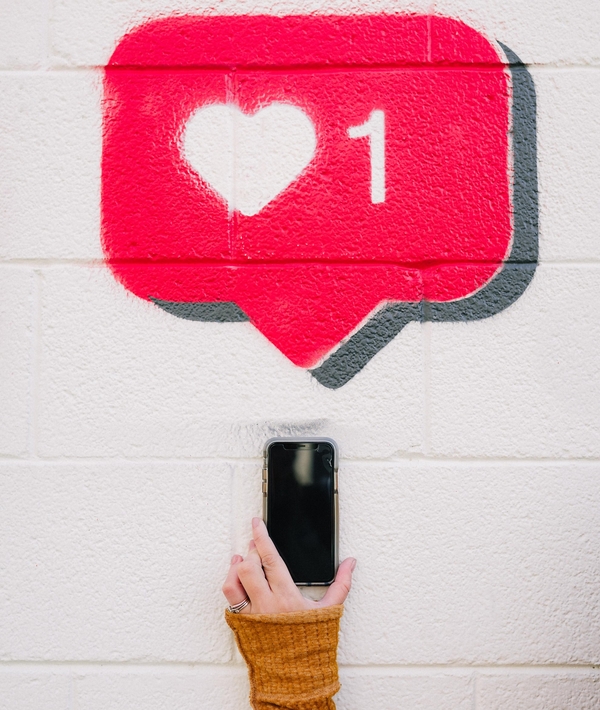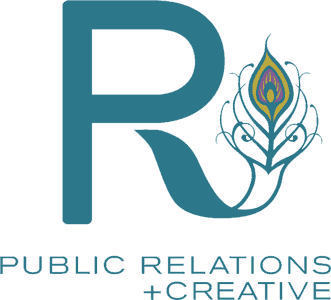marketing trends
Tips for Incorporating Social Media Campaigns into Your PR Strategy
Incorporating social media into your PR strategy is not just an option; in the digital age, it's a necessity. The landscape of public relations has evolved dramatically, and social media has emerged as a powerful tool for building and maintaining a brand's reputation. This blog will provide tips for effectively integrating social media campaigns into your PR strategy and discuss the numerous advantages of leveraging social media in public relations.
1. Understand Your Audience
The first step in any successful social media campaign is to understand your audience. This involves researching your target demographic, identifying their preferences, and understanding the platforms they use most frequently. Knowing your audience helps tailor your content to meet their needs and engage them effectively.
Tip: Use social media analytics tools to gain insights into your audience's behavior. Platforms like Facebook, Instagram, and Twitter offer built-in analytics that can help you track engagement, reach, and demographics.

2. Choose the Right Platforms
Not all social media platforms are created equal. Each platform has its own unique features, audience, and best practices. To maximize the impact of your social media campaigns, it's crucial to choose the right platforms that align with your PR goals.
Tip: Focus on platforms where your target audience is most active. For example, if you're targeting a younger demographic, platforms like Instagram and TikTok might be more effective. For a more professional audience, LinkedIn could be the better choice.
3. Develop a Consistent Brand Voice
Consistency is key in building a strong brand presence on social media. Your brand voice should be consistent across all platforms and align with your overall PR strategy. This helps create a cohesive brand image and strengthens your brand identity.
Tip: Develop a style guide that outlines your brand voice, tone, and messaging. This will ensure that all your social media content maintains a consistent look and feel.
4. Create Engaging Content
The heart of any social media campaign is the content you create. Engaging content can capture your audience's attention, encourage interaction, and drive sharing. Whether it's videos, infographics, blog posts, or images, your content should be informative, entertaining, and relevant to your audience.
Tip: Use a mix of content types to keep your audience engaged. Experiment with different formats and analyze what works best for your audience. Don't forget to use hashtags to increase the discoverability of your content.

5. Leverage Influencers
Influencer marketing has become a significant component of social media campaigns. Collaborating with influencers can help amplify your brand's message, reach a broader audience, and build credibility. Influencers have a loyal following, and their endorsement can have a substantial impact on your brand's perception.
Tip: Choose influencers whose values align with your brand. Micro-influencers, with their niche audiences, can be just as effective, if not more so, than macro-influencers.
6. Monitor and Respond
One of the biggest advantages of social media is the ability to engage directly with your audience. Monitoring your social media channels and responding to comments, messages, and mentions in real time can help build a strong connection with your audience and address any issues promptly.
Tip: Use social listening tools to track mentions of your brand and relevant keywords. This will help you stay on top of conversations about your brand and respond quickly.
7. Measure Your Success
To ensure the effectiveness of your social media campaigns, it's essential to measure your success. Analyzing metrics such as engagement rates, reach, conversions, and ROI will help you understand what's working and what's not, allowing you to adjust your strategy accordingly.
Tip: Set clear, measurable goals for your social media campaigns. Use tools like Google Analytics and platform-specific analytics to track your progress and make data-driven decisions.
Advantages of Using Social Media in PR
Incorporating social media into your PR strategy offers numerous advantages that can enhance your overall public relations efforts. Here are some key benefits:
1. Increased Reach and Visibility
Social media platforms have billions of active users worldwide. By leveraging these platforms, you can reach a vast audience that would be difficult to access through traditional PR methods alone. This increased reach can help boost your brand's visibility and awareness.
2. Real-Time Communication
Social media allows for real-time communication with your audience. This means you can respond to inquiries, address concerns, and share updates instantly. Real-time interaction helps build trust and demonstrates that your brand is attentive and responsive.
3. Cost-Effective Marketing
Compared to traditional advertising and PR methods, social media marketing is relatively cost-effective. Many social media platforms offer free or low-cost advertising options that can be highly targeted. This makes social media an attractive option for businesses of all sizes.
4. Enhanced Engagement
Social media platforms are designed for interaction. By creating engaging content and encouraging conversations, you can foster a sense of community around your brand. Engaged audiences are more likely to become loyal customers and advocates for your brand.
5. Improved SEO
An active social media presence can also benefit your search engine optimization (SEO) efforts. Social media profiles often rank high in search engine results, and the content you share can drive traffic to your website, improving its overall SEO performance.
6. Crisis Management
In the event of a PR crisis, social media can be a valuable tool for managing the situation. By addressing the issue promptly and transparently on social media, you can mitigate damage and restore your brand's reputation more effectively.
7. Data-Driven Insights
Social media platforms provide a wealth of data and analytics that can inform your PR strategy. By analyzing this data, you can gain insights into your audience's preferences, behaviors, and sentiment, allowing you to make informed decisions and optimize your campaigns.
Start Incorporating Social Media Campaigns into Your PR Today
Incorporating social media campaigns into your PR strategy is essential for building a strong, engaged, and loyal audience. By understanding your audience, choosing the right platforms, developing a consistent brand voice, creating engaging content, leveraging influencers, monitoring and responding, and measuring your success, you can harness the power of social media to enhance your PR efforts. From increased reach and real-time communication to cost-effective marketing and improved SEO, the advantages of using social media in PR make it a valuable asset in today's digital landscape. Embrace the potential of social media and take your PR strategy to new heights. We’d love to help; schedule your free consultation with RPR Firm today.
Owned Media Metrics That Matter: Measuring Success in PR Campaigns
In the dynamic landscape of public relations, the metrics used to gauge success have evolved significantly. With the advent of digital media and the proliferation of owned media channels, PR professionals now have an array of metrics at their disposal to measure the effectiveness of their campaigns. In this blog, we'll delve into the owned media metrics that truly matter when evaluating the success of PR campaigns.
Understanding Owned Media
Owned media refers to the channels that a company or organization controls and utilizes to distribute content and engage with its audience. This includes company websites, blogs, social media profiles, email newsletters, and other digital assets. Unlike earned or paid media, it provides brands with complete control over messaging and distribution.

Key Metrics for Owned Media
1. Website Traffic and Engagement
The cornerstone of owned media measurement is website traffic and engagement metrics. Tracking metrics such as unique visitors, page views, time spent on site, and bounce rate provides insights into how effectively your media channels are attracting and retaining audiences. Tools like Google Analytics offer comprehensive data on website performance, allowing PR professionals to assess the impact of their content and messaging.
2. Content Consumption Metrics
Beyond website traffic, it's essential to analyze how audiences are engaging with specific content. Metrics such as the number of blog post views, video watch time, and document downloads offer valuable insights into the effectiveness of your content strategy. By identifying which types of content resonate most with your audience, PR professionals can refine their messaging and optimize future campaigns.
3. Social Media Metrics:
Social media platforms play a pivotal role in owned media strategy, serving as channels for content distribution and audience engagement. Metrics such as likes, shares, comments, and follower growth are indicative of social media performance. Additionally, tracking click-through rates (CTRs) on social media posts provides insights into audience behavior and the effectiveness of call-to-action (CTA) strategies.

4. Email Marketing Metrics:
Email newsletters remain a powerful owned media tool for building and nurturing customer relationships. Metrics such as open rates, click-through rates, and unsubscribe rates offer essential insights into email campaign performance. By segmenting audiences and analyzing engagement metrics, PR professionals can tailor content to specific audience interests and preferences.
5. Search Engine Optimization (SEO) Metrics:
Optimizing owned media content for search engines is crucial for maximizing visibility and organic traffic. Metrics such as keyword rankings, organic search traffic, and backlink profiles provide insights into SEO performance. By continuously monitoring and optimizing SEO metrics, PR professionals can improve the discoverability of their content and drive targeted traffic to owned media channels.
6. Conversion Metrics:
Ultimately, the goal of these media campaigns is to drive desired actions from the audience, whether it's making a purchase, signing up for a newsletter, or downloading a resource. Conversion metrics such as conversion rate, lead generation, and sales attribution are key indicators of campaign success. By tracking conversion metrics alongside engagement metrics, PR professionals can assess the impact of their owned media efforts on business objectives.
Best Practices for Measuring Owned Media Success
Set Clear Objectives:
Before launching a PR campaign, define clear and measurable objectives that align with overall business goals. Whether it's increasing website traffic, generating leads, or driving sales, establishing specific KPIs will guide measurement efforts and ensure accountability.
Use a Balanced Scorecard Approach:
Instead of focusing solely on vanity metrics such as likes and followers, adopt a balanced scorecard approach that incorporates a mix of quantitative and qualitative metrics. By considering metrics related to reach, engagement, conversion, and sentiment, PR professionals can gain a holistic view of campaign performance.

Track Metrics Consistently:
Consistent tracking and monitoring of metrics are essential for identifying trends and measuring progress over time. Establish regular reporting cadences and leverage analytics tools to automate data collection and analysis processes.
Benchmark Against Competitors:
Compare owned media metrics against industry benchmarks and competitors to gain insights into performance relative to peers. Identifying areas of strength and opportunity can inform strategic adjustments and competitive positioning.
In today's digital age, owned media has emerged as a cornerstone of PR strategy, offering brands unprecedented control over content creation and distribution. By leveraging the right metrics and measurement practices, PR professionals can effectively evaluate the success of their owned media campaigns and drive tangible business outcomes. From website traffic and engagement to social media metrics and conversion rates, the key to measuring owned media success lies in adopting a comprehensive and data-driven approach that aligns with overarching business objectives.
Impacts of Intelligent Marketing and PR on Business
With a proper strategy in place, marketing and public relations (PR) can work together seamlessly to improve sales, public opinion, customer loyalty, and so much more! Marketing and PR are distinct practices—marketing focuses on the selling of products, while PR typically focuses on managing and maintaining a brand’s reputation. When applied intelligently, they complement and can strengthen one another.
Keep reading to learn about the varied impacts well-thought-out marketing and PR plans can have on businesses.
1. Increase Brand Awareness

Traditional marketing placements like out-of-home advertising, social media marketing, and in-person events can help sell products. But on a secondary level, they also work to boost brand recognition. PR teams can play off this by complementing marketing efforts with related pitches and other media opportunities. Together, these strategies can boost brand recognition across target demographics and markets.
Brand recognition is far more important for businesses than most realize—according to Liana Zavo, writing for Entrepreneur, “Without publicity and reputation, a business cannot grow in its respective industry.” Brand recognition is not only important for making sales. It also helps maintain and gain market share and subtly impacts public sentiment surrounding a brand.
2. Promote Brand Values
Trust is the most valuable thing a company can possess. With improved brand recognition comes increased awareness of brand values. As such, intelligent marketing and PR strategies can ensure the general public has a comprehensive understanding of a company’s giving initiatives, mission statement, and brand values. These key messages bolster customer loyalty, enhance word-of-mouth marketing, and help keep the top of the marketing funnel full of consumers.
Because social media marketing provides many opportunities for discourse with consumers, social platforms are a great place to share detailed information about company values. Thought leadership, well-placed op-eds, and executive interviews can all achieve similar effects; the strongest plan is to employ all of these strategies at once!
3. Strengthen Community Relations
Community relations fall into the scope of both marketing and PR. Generally speaking, marketing teams can foster relationships between businesses and their neighbors through in-person events and activations, staff volunteerism, and other foot-on-the-street initiatives. Public relations teams can help tell these stories through earned and paid media opportunities. People love to hear heartwarming stories, and these types of narratives also help to strengthen overall brand recognition and public sentiment, even though they don’t push any particular sales agenda!
Brands can also build their own communities by planning meet-ups, volunteer events, and other activations for their consumers and social media followers. PR and marketing teams can coordinate and publicize these events, which are great for demonstrating brand values in an authentic way and exemplifying that a business is interested in more than just selling its products!
4. Boost Staff Morale

Marketing and PR are not just for external campaigns! Especially when it comes to large corporations, marketing and PR strategies should be applied internally to boost staff morale and trust in executive leadership. Some examples of internal marketing and PR campaigns include the rollout of new mission statements and brand values, visual brand redesigns, and onboarding and corporate education.
Regular and effective internal communications impact the satisfaction of the workforce, which will directly affect customer service, word-of-mouth marketing, productivity, and recruitment as well as retention efforts. Internal communications can also be used to ensure employee voices are heard and taken into consideration through town hall meetings and anonymous suggestion boxes.
5. Improve the Profile of Executives
If marketing and PR strategies are executed well, the profile of top-level executives at the company will improve. This is typically achieved through securing speaking opportunities, thought leadership and op-ed placements, conference presentations, and participation on panels. Executives who appear trustworthy, educated, and connected to the company improve consumers’ confidence in the business as a whole.
Additionally, on-staff experts will receive more speaking, writing, and moderating opportunities. The PR team will have to rely less on outside placements. Everyone wins!
6. Keep Audiences Well-Informed

Not all audiences consume news and information from the same channels. Employing a robust marketing and PR strategy will ensure you’re reaching former and future customers wherever they already are instead of having to lure them to your preferred channels. Major business announcements, such as high-profile personnel changes, important product rollouts, and rebrands, should be pushed out across multiple marketing and PR channels to ensure the highest chance of informing all stakeholders. This can include but is not limited to email marketing, social media marketing, press releases, media advisories, interviews, and mailers. Marketing and PR teams must work closely to ensure the success of this type of campaign.
How important is it to hire both marketing and PR teams? Can I get away with just one?
Intelligent marketing and PR strategies will not only complement one another, but they will improve each other’s results. Often, marketing campaigns indirectly result in positive PR and vice versa. But choosing to employ one or the other will likely minimize results and weaken campaigns. Hiring both teams is not a requirement, but it is a smart business move.
Many firms offer both marketing and PR services in order to help businesses streamline their publicity needs. If you are on the hunt for a full-service firm, contact us to schedule a call today!
7 Holiday Marketing Ideas for Your Business
 It’s no secret how important the holiday season is to the success of a retail business. In fact, according to the U.S. Census Bureau, holiday sales represent nearly 27% of revenue for the entire year. As we head into the season this year, R team would like to gift you some holiday marketing ideas to help your business connect with consumers and stand apart from the competition.
It’s no secret how important the holiday season is to the success of a retail business. In fact, according to the U.S. Census Bureau, holiday sales represent nearly 27% of revenue for the entire year. As we head into the season this year, R team would like to gift you some holiday marketing ideas to help your business connect with consumers and stand apart from the competition.
- Speak to their wallet – This time of year, there’s perhaps nothing that speaks to consumers more than a good deal. Consider how you can capitalize on that with discounts, flash sales, and even gift card promotions. For small businesses that may not be able to offer deep discounts, consider gift bundles with complementary products/services that offer value to consumers.
- Team up with your influencers – Influencer marketing is now one of the most effective ways for businesses to generate positive word-of-mouth and sales. Why? Whether it’s celebrities, social media personalities, or industry experts; these influencers feel more like ‘friends’ at least when it comes to taking their word on product or service recommendations. And the holidays are an ideal to time make the most of those connections.
- Engage with consumers – Social media can help you do this on several different levels. To generate buzz that turns into new followers and then customers (you see where we R going with this), consider a fun contest – comment to win, most-liked photo wins, share to win, etc. Of course, the “prize” has to be worth busy shoppers taking the time during the hectic holiday season. Hashtags can also help you generate buzz and spread the word about your products/services and holiday promotions. The best ones are easy to remember, relevant to your offerings and the time of year in addition to taping into what your audience is interested in this holiday season. Another way to engage is to keep on top of comments on your social media, both positive and negative. This shows that you’re paying attention and want to support your customers and potential customers with their needs and/or questions.
- Dress your branding for the holidays – From your visual identity to your content, your branding should reflect the season. It should still feel like your brand, but seasonal messaging, seasonal content (like blogs, social media posts), and having a seasonal look for advertising, emails and other marketing not only keeps you relevant to consumers but done the right way can help you stand out from those running the same tired tactics throughout the year.
- Pay attention to your audience – Again, there are several levels to this. You should already know your audience in terms of their needs and wants, but then apply that to the holiday season from an emotional and practical perspective. What’s their mindset? What unique challenges might they be having now that your product or service could solve? Additionally, be mindful that not every customer celebrates the same holidays. For example, if you have a large international audience, segment them out of your Thanksgiving messaging. And always, personalize your messaging where possible.
- Don’t forget the logistics – While not necessarily as sexy as the out-front holiday marketing, a big key to success this time of year is the behind-the-scenes logistics. First, your website needs to be able to handle increased traffic (you’ve heard those horror stories) and it should also be optimized for mobile since increasingly more shopping is done that way. What’s more, it’s important to have seasonal landing pages for a cohesive customer experience (that pairs with your holiday branding) and to help you track your success more effectively. Lastly, and we recognize the difficulties with supply chains this year, it’s crucial to be as proactive as possible when it comes to inventory.
- Market your brand – Beyond the specific products or services you’re promoting this time of year, it’s also important to positively convey your brand as well. Through public relations, social media, emails, and/or advertising, you can share how you give back this time of year with causes your brand supports, how appreciative you are of your customers, and what makes you as a brand unique whether it’s that you’re an independent retailer, you produce eco-friendly products or some other advantage you may have over competitors.
Bonus Tip – Plan Your Holiday Marketing Ideas Carefully
This bonus tip is arguably the most important as no matter how great R holiday marketing ideas are, without the right plan in place your efforts might be as welcome to your audience as a fruit cake. With vast holiday marketing experience and retail clients in Nashville, San Antonio, New York, and all points in between, we can help by learning about your business, discussing your goals, and creating a custom scope of work. Then, we’ll work together to make it happen. Don’t need a full campaign? We can help with a la carte services too!
For R help with your holiday marketing ideas, click HERE to schedule your FREE discovery call today!

Influencer Marketing: How Social Media’s Influence on PR Benefits Your Brand

Gone are the days of painstaking research to build accurate media lists, of phone pitches, of basing announcements on publication dates, and of waiting, sometimes for months, to see if you were published via press clips received – gasp – by mail! As social media has evolved, it has elevated PR right along with it to the cheers of us professionals and the benefit of the brands we represent. So what is influencer marketing, and how does social media’s influence on PR benefit your brand? Here’s how.
The Purpose of PR
The Public Relations Society of America (PRSA) defines PR as “a strategic communication process that builds mutually beneficial relationships between organizations and their publics.” You do this by influencing, engaging, and building a positive relationship and/or image with your audience.
Many confuse PR with marketing, but it’s actually quite different. One big difference is in the amount of control you have over the narrative. In marketing, you pay to place an ad with your message; in PR, the amount of coverage, and in essence, your brand’s perception depends solely on your access to and/or relationship with the media. Or, at least it did…before social media.
Using Social Media in PR
Essentially, social media helps us to break down the invisible wall that once stood between brands and their audience(s). It’s no longer just about going through the media with your story and praying for the best. Social media can help you to meet your brand’s PR goals by:
- Working with Influencers – These people give your brand a voice in a way neither you nor a media story could do on its own. Influencers have huge followings that you can tap into to promote your products or services and help with reputation management.
- Social Listening – PR was more reactionary in the past, but with social media, you can keep your finger on the pulse of public perception of your brand. This enables you to proactively respond to any issues that might come up and better understand your customers in general.
- Using Your Platform(s) – Again, it’s about controlling the narrative as best you can. Social media can help you do that much more swiftly, if not immediately when necessary. Today’s news cycle is 24/7, so getting your story on social platforms can also influence the angle of media coverage as journalists do their share of social listening as well.
- Creating Real Relationships – Social media allows you to engage your audience directly with content that’s not only newsworthy but also important to their needs and where they are in the sales cycle. Think blogs, how-to guides, FAQs, and even related content that ties with your brand that could help them.
- Improving Media Relations– Social media is an integral part of PR now, but it doesn’t replace the importance of good media relationships. It can make that easier, however. Most journalists are active on social media and publicly list their handles. You can use this to learn more about their beats, when they need resources, how they prefer to work, as well as their personal and professional interests. Depending on your industry, you could include bloggers in this as well!
All this being said, be careful with a do-it-yourself PR strategy. It’s certainly easy enough to post, but appropriate messaging, knowing how to work with influencers and media, social listening savvy, and the ability to effectively measure results is key.
R team has extensive PR experience, and we’d love to help your brand. See how by clicking HERE to schedule a FREE Discovery Call Today!

R Marketing Plan Steps for a Successful New Year

It's a new year and that means you should be doing your marketing planning NOW. With last year fresh on your mind and the promise of this year ahead, this is the perfect time. Plus, most businesses are slower at the beginning of the year giving you more opportunity to reflect and plan. Not to mention trying to play catch-up later in the year can really limit your options for business growth. So, with all systems go, R tips can help you successfully map out your marketing plan steps.
Marketing Plan Steps to Include
Throwing it against the wall to see what sticks is as bad of an idea for spaghetti as it is your marketing. You must be strategic, or much like the spaghetti, you’ll just have a mess. Instead, R marketing plan steps include:
- Know who you are – We’re talking about your brand as it’s the foundation from which you will build your plan. Be able to answer these questions clearly: What do you do? What are your products/services? Who is your target audience? What is your promise to customers (value proposition)? What sets you apart (your positioning)?
- Identify what you want to do – With your brand identity firmly cemented you can begin identifying marketing objectives. Drive leads, convert more leads to customers, increase awareness, upsell or cross sell customers, launch a new product or service, and/or increase customer satisfaction are common ones, but here’s the key: you have to make it quantifiable to be able to measure success. Here’s another key: you can’t do everything, pick two or three to focus on.
- Take stock – This is an often-overlooked step but before you begin any new marketing campaigns, it’s important to take stock of what you’ve already done or are doing currently. Look at your social media, content marketing, SEO, ads, and public relations activities with the goal not only to avoid duplication of effort but also to see what you might improve. Also, make sure to perform a competitive analysis to get a good handle on your competitors’ strengths and weaknesses.
- Determine how you’ll get there – Now for the fun! What tools will you use to achieve your marketing goals? There are endless options available, but this is where a solid understanding of your target audience(s) comes in as quite simply, you need to be where they are. What’s more, keep in mind those tools may change throughout the sales cycle. For example, social media may pull in leads while email helps you to nurture them. Your content will likely also need to change throughout the sales cycle so you’ll need to flesh out what message to promote when.
- Find out how you did – We talked about the importance of quantifiable goals above and this is where that really comes into play. Google Analytics and Search Console are ideal to measure website traffic; where it’s coming from, visit length, and conversions. You can measure social media through the individual properties (Facebook, Twitter, Instagram, etc.) and can measure email metrics through your platform too. Or, tools like Hubspot can bring it all together. For PR, media impressions are key.
More on Measuring Your Goals
Not only is it important to measure the results of your marketing plan based on your goals, but you need to do it on an ongoing basis! So many businesses neglect this step. A marketing plan isn’t something you can set and forget. Success depends on your ability to optimize throughout the year as you learn more about what works and what doesn’t.
Leave it To the Experts
This can be overwhelming - we get it! Not everyone has a dedicated marketing department to take this on and for many of our clients, marketing is not their area of expertise. You want your marketing dollars to pay off, but not at the expense of what you need to be focusing on – running your business! That’s where we come in!
R goal is to help clients in industries such as restaurant, hospitality, retail, health and wellness, business, non-profit and more to achieve theirs through:
- Marketing Strategy and Campaign Creation
- Public Relations
- Social Media
- Event Management
- Content Marketing
- Creative Services
- Analytics
For R help your marketing plan, click HERE to schedule a FREE Discovery Call today!

Give (& Get) with R Cause Marketing Campaigns

Cause marketing isn’t a new thing. It’s actually been around since Marriott Corporation partnered with the March of Dimes in the 1970s. But it may be more important today than ever. Not because causes are more important now, rather it’s more important for brands to support them. Why? Brands need a way to cut through the noise and connect with consumers on a more purposeful level. Doing good for others certainly fits that bill. Here are tips to get you started.
What is a Cause Marketing Campaign?
Cause marketing in and of itself is a cooperative effort between a for-profit brand and a non-profit for the mutual benefit of both. The benefits include increased connection with consumers and increased awareness of the cause as well as profit. A cause marketing campaign is the implementation of that effort with the goal to increase sales for the brand while also increasing money contributed to the non-profit.
Keep in mind that cause marketing campaigns don’t have to focus on just national or global causes. They can and should focus on local causes as well.
The Impact of Cause Marketing
So how much impact can cause marketing really have for brands? Quite a bit actually. In fact, a Mintel study shows that 73% of Americans say a company’s charitable giving affects their purchase decisions. Not only that, 50% of Americans say that they would switch to a company that supports a cause they believe in and that stat rises to 61% for Millennials (aged 24-41).
But it’s not just that consumers think it’s nice for brands to support causes. It’s increasingly becoming an expectation. That same Mintel study found that nearly two-thirds of Americans believe it is a company’s responsibility to give back (65%), while around half expect brands to improve the local community (53%).
Cause marketing has even become so important there’s an actual day devoted to it–Giving Tuesday. It’s a day that not only encourages all people to do good by donating to causes that are important to them, many brands partner with those nonprofits to match a certain percentage of donations they receive that day. It’s hugely impactful for consumers, nonprofits, and brands alike!
How to Do Cause Marketing
So, how do you create a successful cause marketing campaign? Start right here:
- Authenticity: We encourage all R clients to give back with a cause that speaks to their mission because, above all, your campaign must be authentic to resonate with consumers. Ask yourself, is there a non-profit that aligns with your goals as an organization?
- Audience: Next, consider the target audience for your brand. Are there causes that are more likely to speak to them and/or that they may already support? Ideally, the cause that you choose will align with your mission and the interests of your target audience.
- Collaboration: Most non-profits are thrilled for any support, but collaboration can maximize the effectiveness of your campaign as it can give you insight on what’s worked and what hasn’t in the past. Not to mention to help you get the message right!
- Timing: Not only when to launch but also the duration of the campaign. Typically up to 2 weeks gives you enough time to generate excitement and to hold your consumer’s attention. Then consider if there a certain time of year in which your cause is more urgent?
- Branding: Go beyond simply putting a non-profit’s logo on your marketing materials. Think about a cohesive strategy across all your platforms. Create a hashtag and content to share as well as perhaps even a logo and/or specific design for the campaign. The idea is for the campaign to stand out while complementing your brand and keeping consumers engaged.
- Call to Action: Consumers need to be able to quickly understand the ‘why’ for the campaign and what you want them to do. So, make sure there is a clear call to action at each touchpoint. This will also help you quantify the success of the campaign later.
- Share the Results: Another connection builder with consumers is to share the results of the campaign as well as its impact on the cause. And thank them for their contributions! This creates trust that you did what you said you would, and who doesn’t like appreciation?
Cause Marketing Campaigns in Action
Here are some favorite cause marketing campaigns from R clients:
- Peg Leg Porker: Teaming up with Operation BBQ Relief to serve meals to first responders
- Hearne Dry Goods: A portion of all proceeds support Lwala Community Alliance
- Las Palmas Mexican Restaurant: St. Jude Children’s Research Hospital fundraiser
- Bambinos Boutique: Donates a portion of proceeds from events to Hand to Hold
This year’s Giving Tuesday is coming up on December 1 which means now is the perfect time to create your cause marketing campaign. We’d love to help—click HERE to schedule a FREE Discovery Call today!

20 Top Nashville Influencers (and what makes them so important to brands)
 Image by Style Blueprint
Image by Style Blueprint
Merriam-Webster defines an influencer as someone who inspires or guides the actions of others, or more specifically, as someone who is able to generate interest in something by posting about it on social media. Brands have taken notice and influencer marketing is now a key component of social media strategy. How do they help and who are the top Nashville influencers? Find out here.
The Influence of Influencers
According to We Are Social, 3.484 billion people actively use social media (that’s 45 percent of the world’s population if you’re counting!). What we can pretty much all attest to is that we’re sick of being marketed at from every direction, no matter how targeted it may be. Enter influencers.
Early on, influencers were primarily celebrities. Anyone ever bought anything a Kardashian plugged? You don’t have to admit it, The Guardian shares the proof. But celebrity endorsements can be hard to come by, and can cost you big.
Luckily, there are plenty of “regular people” who have built a reputation for their knowledge and expertise on specific topics or specific categories through regular social media posts. They’re seen more as trusted friends and peers and are able to generate an engaged following that pays close attention to their recommendations. While they may not have the millions of followers, these influencers can potentially drive an average of 16x higher engagement rates than celebrities , according to The Realtime Report.
Top Nashville Influencers
If you’re a lifestyle brand in Nashville looking to connect with consumers and establish trust, influencer marketing may be just the way to go. Here are our top 20 Nashville influencers (in no particular order):
- @hunterpremo | Hunter Premo | 246k followers
Nashville native Hunter Premo is the daughter of one of the city’s most sought-after makeup artists. But she’s more into fashion, sharing her boho style – and her life – with tens of thousands of followers.
- @malloryervin | Mallory Ervin | 543k followers
After competing in Miss America as well as The Amazing Race (and gaining a following from that), Ervin is an influencer on topics that range from marriage and kids to fashion and female empowerment.
- @nashvillefoodfan | Kate Davis | 97.1k followers
Born out of a desire to share her love of Nashville’s culinary scene, Davis’ Instagram has now become the place to inspire foodies or anyone exploring local restaurants to try.
- @livingwithlandyn | Living With Landyn | 270k followers
This influencer and blogger shares her tips on food, fashion, and family plus offers tons of “swipe up” retail codes and life hacks.
- @happilygrey | Mary Lawless Lee | 54.8k followers
The Happily Grey founder posts beautifully curated pictures from her life as a fashionista, businesswoman, wife, new mom, and dog lover.
- @passportsandgrub | Tomiko | 10.8k followers
Tomiko provides all kinds of travel tips and she also works to help brands shift the culture on diversity in tourism.
- @iamreneewatkins | Renee Watkins | 68.2k followers
This yoga instructor and doula posts fitness and beauty tips as well as body-positive messages and book recommendations.
- @cameronpremo | Cameron Premo | 15.9k followers
Husband to Hunter Premo, this photographer/videographer is an influencer in his own right on topics that include adventure, style, and chivalry for the modern gentleman.
- @erinoprea | Erin Oprea | 182.7k followers
She’s a trainer to local celebrities with a feed that shares workout tips, healthy recipes, and videos from her weekly Saturday night dance party with husband Sean.
- @emilyblincoe | Emily Blincoe | 362.5k followers
This photographer came to Nashville by way of Austin and posts snaps of everything from walks in the park with her pups to front yard hangs and the beauty of everyday life here.
- @wickedtasty | Dan Burkard | 9.4k followers
This power duo of Michelle and Dan came to Nashville by way of New England and we are all the more hungry for their food photos for it! Their posts and snaps of recipes, top lists of fab food finds, happy hours and more are not to be missed!
- @nashgirleats | Holly | 21.4k followers
Holly is a nurse practitioner who loves exploring some of the hottest restaurants and dishes in Nashville. She also shares some of her own dishes on her feed.
- @the_ moody_foody | Josh | 10.2 followers
Josh’s blog reviews the best restaurants in Nashville and offers fun insights into the dining scene while all the mouth-watering finds are shared on Insta.
- @nashvillewifestyles | Ashley Houston | 132k followers
Ashley is a girl mom (and a dog mom) with a lifestyle blog that dishes on food, the latest fashion trends, parenting tips and life in Nashville where she’s lived for 10 years.
- @thehungryleopard | Blair Beaty | 5.5k followers
Blair overcame hunger herself and now shares her foodie experiences across Nashville and beyond.
- @blonde_voyage_nashville | Courtney Hood | 13.4k followers
This native Nashvillian blogs about food and lifestyle as she brings us along on her epic travel adventures near and far.
- @nashvillevibin | Neysha Clevenger | 6.7k followers
She’s your go-to girl for all things Nashville sharing delicious food as well as local clothing and cool snaps of our awesome city!
- @pocketsandbows | Brittany | 48.5k followers
Brittany is a creator, influencer and stylist who delivers daily inspiration for luxe plus fashion on Instagram and YouTube.
- @fabglance | Melissa | 11.5k followers
Melissa is a digital strategy expert who brings authentic storytelling back to social media. In her spare time she shares the best plus size fashion trends and tips.
- @lauraleabalanced | Laura Lee | 86.4k followers
Chef Laura Lee has a background in health-related cooking and shares healthy, delicious recipes, meal plans and insights into her.
For R help with influencer marketing, click HERE to schedule a FREE Discovery Call today!
 Image by Nashville Lifestyles
Image by Nashville Lifestyles
5 Ways To Pivot Your Business Message Right Now!

As we enter a new “normal” in terms of our business world during the time of COVID-19, the word “pivot” has been thrown around as a big buzzword, particularly when it comes to businesses. For us as word-weavers, we want to help, as when you pivot internally and not externally things can go south. Meaning, if your messages are mixed, inconsistent or flimsy (which is easy to do considering the world has turned upside down in the past 90 days), your people may be lost as to what you really are offering and thus move onto another pasture, if you know what we mean. We R here to help with our 5 ways to pivot your business message to communicate your new normal.
1. Google your business and your top employees
Google your business and your top employees and see what has been written and what may be changing for you for the foreseeable future. If you are, for the foreseeable future, going to offer curbside pick-up, see if that is in your current online search messaging, and if not, hire a great SEO company to make it happen (we have friends we can point you to if you need it). People are online now more than ever and most people want to come back to you, but if they see the words “closed,” “temporarily closed,” “laid off,” “furloughed,” or whatever else has come up for you and others in the past month, they may be shy to buy, purchase, or stop by for a visit if you plan on reopening anytime soon. Make a checklist of where you need to re-message your message and get going on that ASAP.
2. Update your social media
Update your social media but know the who, the what, and the when before you do so.
3. Meet people where they are
Get masks, sanitizer, and so on for your establishment. We even have a client offering sneeze stations, no joke, and anticipate varying levels of comfort for guests. Some people are not going to want to get out of their cars for the foreseeable future even when governments open up. So be prepared for those who are ready to come in and those who want to be met outside.
4. Offer NEW purchasing options
You may want to update your websites (we are happy to help) and offer some additional items for sale. We have restaurant clients that are upping their merch and dry goods on their websites. Furthermore, we have online retailers offering free shipping as a long-term goal!
5. As always be kind!
This seems obvious but when you look at a Yelp review that slams you for whatever choice you may be making. As the world opens back up, be sure to answer when you have cooled off—a quick tweet, Yelp response, or what have you, can have a lasting effect.
If you need more tips, tricks, or help, schedule a FREE Discovery Call Today!

10 Ways To Help Small Businesses Right Now!

We are the behind-the-curtain folks, the weavers of words, the people that help share passion and spread good news! I am writing this as, like many of you and like most of the world, I want to save all the restaurants and bars, and help small businesses from the hardships being immediately faced. I feel like every morning I wake up and see someone else I care about posting about making a hard decision with their business, and it seems that although we are practicing things like “social distancing”—a phrase I never have used in my life as both an extrovert and a lover of people—we are also in the midst of times where supporting and giving services is needed more than ever.
As communications pros, we can be a beacon of hope during these strange and difficult times—we are the messengers to the media, we are the media, we move the needle from fear to fearless by being courageous and creative innovators in a time of great need! So I ask, HOW can we help—now? I’ve listed some of R teams ideas below on ways to help small businesses, and support clients, media friends, and most of all each other. Let us know what you’d add, too, we are here to bounce ideas, support, and help small businesses! Let’s do this!
1. Pick up the phone
Get off email and CALL your people—they need you. They’re reading the news and social media and seeing their friends close down and make difficult decisions—offer creative solutions that can help them weather this storm (an abbreviated but awesome take-out menu, clever delivery options, etc). Read this again, CALL and connect, it makes a world of difference—trust me.
2. Source ideas with other professionals.
If you are like me, you have been writing crisis communication plans, scraping all the content you planned for this month and next and next and gearing up for a daily swipe of your ideas—you need some creative support! Call, text, and email fellow communications pros! This is the time to give extra hours, time, and talents to each other to support the world of small businesses. THIS is our time to really support each other and get over any fear that someone will take your client or idea. In this case, we all need to save this sinking ship for EVERYONE and we are the answers.
3. Be a marketing genius
During the Great Depression, furniture stores offered free incentives called “Depression glass” (like a plate or a teacup) and people went wild shopping for furniture just to get the free glasses, even when they didn’t have much. Today a tiny Depression tea glass is worth $25-$75 (some more), and these were given out for free to our grandmothers. Who came up with that idea? A MARKETING GENIUS, that’s who. Us marketing pros are the people behind the curtain and we get to show off our most genius ideas—often in the most desperate times.
Just this week alone I have seen café owners delivering goods, celebrities reading storybooks online, museums offering free tours, and even Disney taking viewers on virtual rides. The internet is blowing up and our ideas are just waiting to take off and find value with our clients. So do what you need to be risky and wise and get someone to sign up for something they never thought they would—it WILL work!
4. Be calm + confident
Be confident, be collected, and know this too shall pass. If we hold our visions our clients will too, and we are the ones who help document and execute those visions. So it is up to us to be calm in the storm when they need to freak out because their business is taking turns they never imagined. Be confident. Know you were hired because you are smart, talented and clients can count on you to share their message—that’s you!
5. Be mindful
Be mindful of your words instead of “hard times” change that up for “things are constantly changing” instead of “closing” change that up for “we will open as soon as we can.” Words have power and now more than ever WE are responsible for encouraging clients and media to lessen the drastic language and fear and see things as a work in progress. As the truth is this is actually a golden opportunity to be creative with businesses. Those that know how to pivot and stay calm will be the ones on top after the storm blows over.
6. Be generous with your time
We need to write more blog posts, edit more press releases and help more than we probably ever have before—now is the time to get our boots dirty. It’s hard work, but so worth it!
7. Shop, shop, shop
Buy all the things—get merch, get gift cards, and practice what you are preachin’ sister!
8. Make your pitches short and sweet
And with all information in digestible deets—who, what, where, and website links—and nothing else! We don't want to make more work for our media friends who are getting more emails than ever right now.
9. Share other people’s creative work
Not just your clients! Ask and offer fellow comm friends ways you can lend a helping hand! Giving truly makes the world of difference in stressful situations.
10. BE KIND
Be kind to yourself included, take a bath, do an online yoga class, pour a glass of wine at the end of the day, whatever gets you to zen. You can’t save the world if you aren’t taking care of you and from there sprinkle out the good witch vibes and let people know they have had the power to change and shift and grow within them the whole time. (‘nuff said).

From friends in the comm worlds:
“Entertain and engage! This is the time to show your audience your brand value through digital marketing by giving them what they need the most right now. Something to do. You literally have a captive audience, so don’t waste that opportunity with your average content. Find creative ways to entertain and engage your audience. A great way to do that is through mixed media: video, graphics, motion graphics, email campaigns, etc. Create giveaways, quizzes, and games! The more your audience feels supported by your brand during this time, the more brand loyalty they will reciprocate when things go back to normal.” Sarah Wlliams (digital marketing guru)
Have something to add and help small businesses? Please share!










